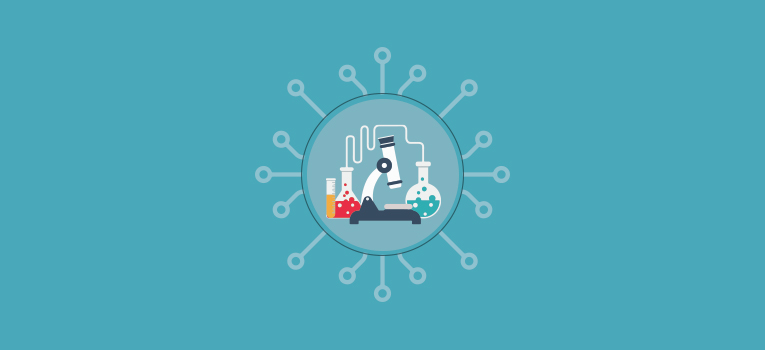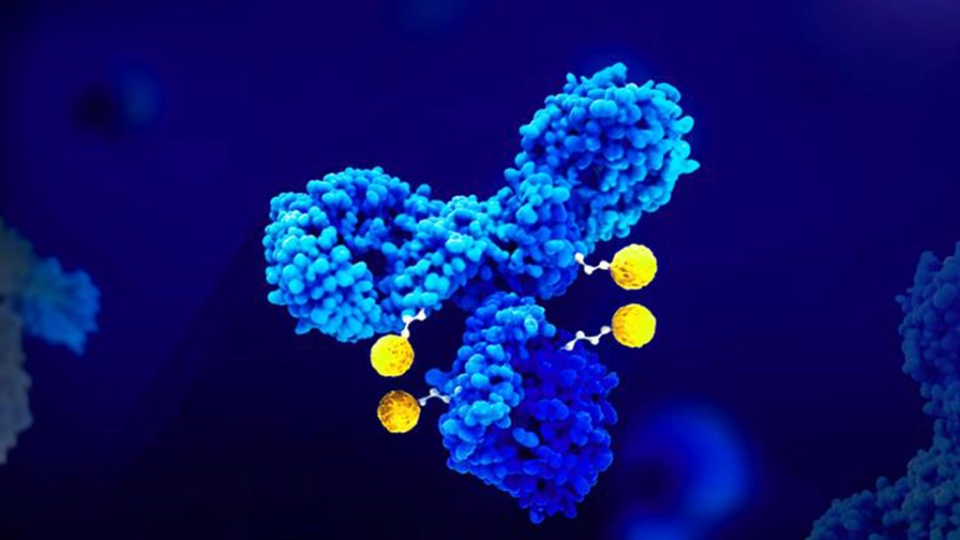Artificial intelligence (AI) transforms according to the interaction, consumer information, and goods and services across industries. In the healthcare industry, AI is already changing patients’ experiences, how clinicians practice medicine, and how the pharmaceutical industry operates.
Although, Artificial Intelligence plays an important role in different aspects of medical diagnosis like medical decision-making, management, automation, admin, and workflows. It can be used to diagnose cancer, triage critical findings in medical imaging, and acute flag abnormalities, help radiologists prioritize life-threatening cases, diagnose cardiac arrhythmias, predict stroke outcomes, and help manage chronic diseases.
Since the, 1970s diagnostics and treatment have been the prime focus of AI, as MYCIN was developed at Stanford for diagnosing blood-borne bacterial infections. MYCIN and other early rule-based systems showed promise for diagnosing and treating disease accurately but were not adopted for clinical practice. They were not substantially better than human diagnosticians, and they were poorly integrated with clinical workflows and medical record systems.
AI is a rich realm of data, algorithms, analytics, deep learning, neural networks, and insights that is growing and adapting to the needs of the healthcare industry and its patients. However, over the past few years, artificial intelligence in medical care has reduced the extreme pressures felt by the medical industry and is constantly working to evolve in diagnostics. Recently IBM’s Watson received considerable attention in the media for its focus on precision medicine, particularly cancer diagnosis and treatment. Watson employs a combination of machine learning and NLP capabilities. However, AI seems to be still developing and be a part of the healthcare diagnostic industry.
Types of AI of Relevance to Healthcare Diagnostics
Artificial intelligence is not one technology but rather a collection of them. Most of these technologies have immediate relevance to the healthcare field, but the specific processes and tasks they support vary widely.
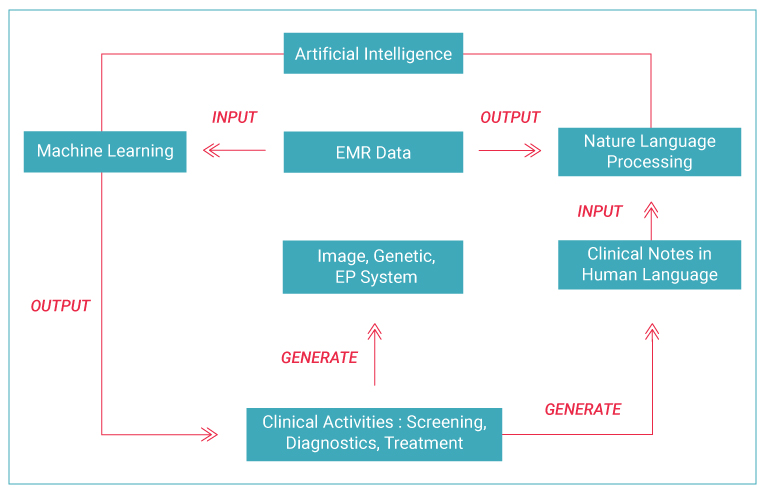
Some AI technologies with high importance to healthcare are defined as:
1. Machine Learning- Neural networks and deep learning.
- It is a statistical technique for fitting models to data and learning by training models with data.
- The most common application of traditional machine learning in healthcare is precision medicine, predicting what treatment protocols are likely to succeed on a patient based on various patient attributes and the treatment. The great majority of machine learning and precision medicine applications require a training dataset for which the outcome variable (e.g., the onset of diseases) is known, thus called supervised learning.
2. Natural Language Processing
- NLP includes applications such as speech recognition, text analysis, translation, and other goals related to language.
- There are two basic approaches to it; statistical and semantic NLP.
- In healthcare, the dominant applications of NLP involve the creation, understanding, and classification of clinical documentation and published research. NLP systems can analyze unstructured clinical notes on patients, prepare reports (e.g., radiology examinations), transcribe patient interactions, and conduct conversational AI.
3. Rule-based Expert Systems
- Expert systems based on collections of “if-then” rules were the dominant technology for AI in the 1980s and were widely used commercially in later periods.
- In healthcare, they were widely employed for clinical decision-support purposes over the last couple of decades and are still widely used today. Many electronic health records (HER) providers furnish a set of rules with their systems today.
4. Physical Robots
- Physical robots are well known by this point, given that more than 200,000 industrial robots are installed each year around the world.
- Surgical robots, initially approved in the USA in 2000, provide “superpowers” to surgeons, improving their ability to see, create precise and minimally invasive incisions, stitch wounds, and so forth. However important decisions are still made by human surgeons. Common surgical procedures using robotic surgery include gynecologic surveys, prostate surgery, and head-neck surgery.
5. Robotic Process Automation
- This technology performs structured digital tasks for administrative purposes involving information systems as a human user following a script rule.
- In healthcare, this technique can be used in many ways, like in billing, image recognition, and extracting data.
AI Applications in Diagnostics
Artificial intelligence is already playing a vital role in disease diagnostics, with machines sifting through data to identify symptoms, risk factors, and more. Machine learning has made great advances in pharma and biotech efficiency. Although, top 4 applications of AI in medicine today are:
1. Diagnose Diseases
- Diagnosing diseases correctly requires years of medical training. Even then, diagnostics is often a time-consuming process.
- In many fields, the demand for experts far exceeds the available supply. That puts doctors under strain and often delays lifesaving patient diagnostics.
- Other than this, machine learning, particularly deep learning algorithms, has recently made huge advances in automatically diagnosing diseases, making diagnostics cheaper and more accessible.
- Machine learning is particularly helpful in areas where the diagnostic information a doctor examines is already digitized
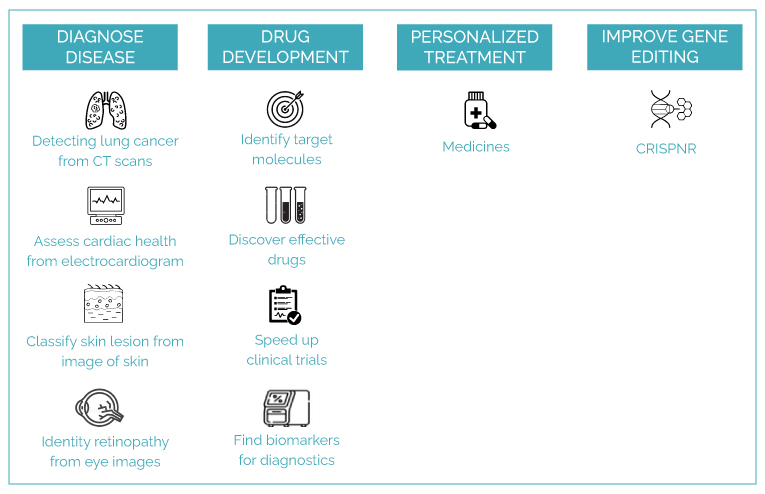
2. Develop Drugs Faster
- Developing drugs is a notoriously expensive process. Many of the analytical processes involved in drug development can be made more efficient with Machine learning. It has the potential to shave off years of work and hundreds of millions in investments. AI has already been used successfully in all of the four main stages in drug development.
Stage 1: Identifying targets for intervention.
Stage 2: Discovering drug candidates.
Stage 3: Speeding up clinical trials.
Stage 4: Finding biomarkers for diagnosing the disease.
3. Personalize Treatment
- Different patients respond to drugs and treatment schedules differently. So personalized treatment has enormous potential to increase a patient’s lifespan.
- But it’s very hard to identify which factors should affect the choice of treatment.
- Machine learning can automate this complicated statistical work and help discover which characteristics indicate a patient will respond to a particular treatment. So, the algorithm can predict a patient’s probable response to a specific treatment.
- The system confirms this by cross-referencing similar patients and comparing their treatment and outcomes.
- The resulting outcome predictions make it much easier for doctors to design the right treatment plan.
4. Improve Gene Editing
- CRISPR, specifically the CRISPR-Cas9 system for gene editing, is a big leap forward inability, is a big leap forward inability to edit DNA cost-effectively and precisely, like a surgeon.
- The technique relies on short guide RNA(sgRNA) to target and edit a specific location on the DNA. However, the guide RNA can fit multiple DNA locations, leading to unintended side effects (off-target effects). The careful selection of guide RNA with the least dangerous side effects is a major bottleneck in applying the CRISPR system.
AI Related Developments in Diagnostics
Some of the evasive diseases could be easier to detect with AI-supported diagnostic technology that can scan thousands of medical records and analyze data that might escape the attention of tired, overworked medical professionals. AI can also improve the time-consuming process of classifying medical records. Electronic health records potentially possess unlocked bits of insight that can lead to robust diagnosis and improved healthcare. According to “Healthcare IT News, 80.5% of the hospitals have installed at least a basic electronic health records system”. Although patient records are digitized, mainly easing data transfer between medical professionals, most of that information still needs to be read by a doctor. Thus, keeping this in mind, AI has various benefits and challenges to remain operational in diagnostics. Some of the benefits and challenges are shown below figure.
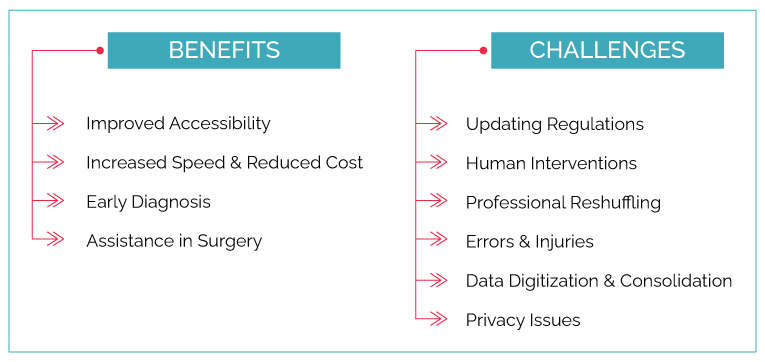
As a Standford dermatologist told The Daily Beast,” AI doesn’t get tired” That doctor points to how an AI algorithm “learns” to discern subtle patterns it views over large data sets, helping doctors diagnose and gain larger insight about diseases. Also, the adoption of AI in diagnostics is being taken into consideration by many companies. They are developing products that would include AI in diagnostics and benefit the patients and the doctors. Some of the developments are:
1. Google Health/DeepMind
DeepMind’s health team merged with Google Health to “build products that support care teams and improve patient outcomes.” Google Health is tapping into AI’s potential to help with cancer diagnosis, predict patient outcomes, avert blindness, and more.
2. Oncora Medical
The Philadelphia-based start-up aims to help cancer research and treatment, especially in radiation therapy. One of its co-founders, David Lindsay, was doing clinical work as an M.D./Ph.D student at the University of Pennsylvania when he recognized that radiation oncologists had no integrated digital database that collected and organized electronic medical records. So, he decided to build exactly that: a data analytics platform that can help doctors design sound radiation treatment plans for patients.
3. Butterfly Network
The company’s Butterfly iQ is the first step towards this goal. This portable handheld device uses Ultrasound-on-Chip technology to replace the traditional transducer system with a single silicon chip, emulating any type of transducer (linear, curved, or phased) and allowing whole-body imaging from a single probe. By combining semiconductors, artificial intelligence, and cloud technology in a pocketable form, the Butterfly iQ makes remote medical imaging a reality.
Future of AI in Diagnoses
The future of AI in diagnostics is still at the developing stage and includes a task that ranges from simple to complex, everything from answering the phone to medical record review, population health trends and analytics, therapeutic drug, and device design, reading radiology images, making clinical diagnoses and treatment plans and even talking with patients. The application of Machine learning in diagnostics is still evolving, but more ambitious systems involve the combination of multiple data sources (CT, MRI, genomics and proteomics, patient data, and even handwritten files) in assessing a disease or its progression. However, AI algorithms in the future will recognize not just one but various conditions from a single image or data set (e.g., multiple retinal diseases from a single fundus image). This is already a reality for numerous radiology AI companies. For example, DeepMind’s and Pr3vent’s solutions are designed to detect over 50 ocular diseases from a single retinal image, while VUNO’s algorithms can detect a total of 12. Therefore, the best opportunities for AI in healthcare over the next few years are also the hybrid models, where clinicians are supported in diagnosis, treatment planning, and identifying risk factors but retain ultimate responsibility for the patient’s care. It will result in faster adoption by healthcare providers by mitigating perceived risk and starting to deliver measurable improvements in patient outcomes and operational efficiency at scale.
How Can IeB Help You?
Ingenious e-Brain provides intellectual property research, business research, and market research solutions across the globe. Ingenious e-Brain provides impactful solutions tailored to your business. With a unique combination of expertise, proven methodologies, and knowledge base, our team supports clients in all aspects of their business. IeB can provide detailed analytics related to AI in diagnostics through technology landscape and technology scouting, as well as the various parameters impacting the growth of AI in diagnostics through competitive intelligence. We can also provide emerging solutions and companies into the domain and the detailed profiling of their products. IEBS can also answer many other questions through different problem-solving approaches.

